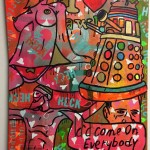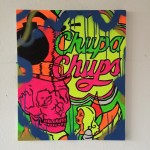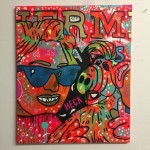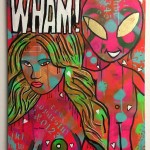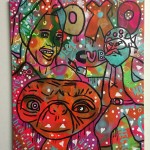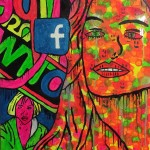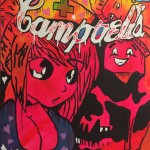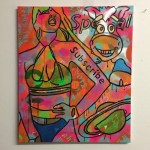Cardiff artist Barrie J. Davies takes us into a world where the Burger King logo has all the colors of the rainbow, the Michelin Man looks like fruit chews, and Tweetie Bird wears a suit.
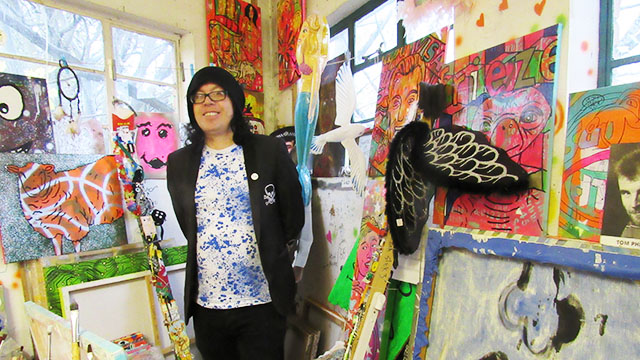
Clad in a knit beanie, black-rimmed eyeglasses, and paint-splattered shirt, Barrie J. Davies opens the mint-colored gate of the workspace he shares with 16 other people. There is an explosion of highlighter colors. You see spilled paint, pans and tubes of watercolor, bulks of brushes, blown-up balloons, hanging installations, a life-size policeman made of carton, finished art, unfinished art, and glitter—lots of glitter.
As you walk through the hallways, the bursts of neon and sparkle just immediately tell you that you have arrived in his sacred painting space. Images that you’d never think would go together—YouTube and ET, Mr. Potato Head and Burger King, a Visa logo and R2D2—would look as if they’re a match made in heaven. It’s the relatability that most TV-watching, fast-food eating consumers have with these images that make it work. It’s catchy, easy to get, and accessible. He describes his style as a lot like a Google search; you never know what you’re going to get, but you go there anyway.
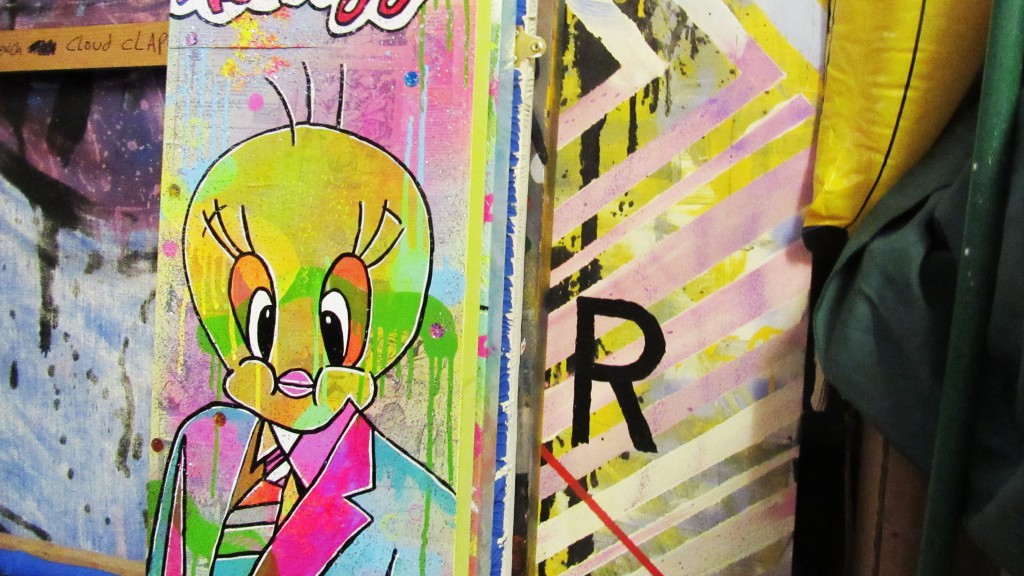
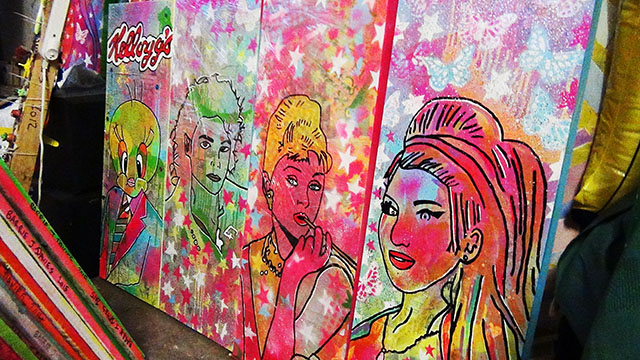
While most of us are just starting to ride a bike at age six, Barrie J. Davies had already decided he’d be creating art from what he sees on TV, in comic books, and at the supermarket.
“I used to go stay with my uncle, Tom Philips, and he did art. I used to do watercolors with him and when I was six, I decided to become an artist. I just went ‘I’m gonna make art because I just thought wouldn’t it be cool to make pictures all day?’ I went to see the Tate gallery and I saw Roy Lichtenstein’s Wham and I remember started going ‘wow!’ and I like to have that sort of impact,” he says.
Besides Lichtenstein’s iconic comic book-inspired artworks, Andy Warhol and Rob Pruitt are also artists whose works he infinitely admires. A common denominator of all these geniuses would be their love affair with eye-popping colors that are impossible to miss—pretty much like his approach on his pieces.
He sprays neon colors of paint unto a canvass—sometimes a plain canvass, other times a canvass with paper collage on it—and starts using his trusty sharpie to draw infamous pictures he finds online. He also humorously throws in an image of a sheep from time to time as an ode to being Welsh.
As his choice of images are often products of pop culture, his works then tend to have undertones of poking fun at advertising. He’d turn a classic Heinz Beanz can into a remix of hues with an accompanying text that says “baked beans in a deliciously rich tomato sauce”. Although he is quick to say that he doesn’t have anything against this capitalist practice.
“You can’t get away from advertising. I embrace it. I love adverts. When I was a kid, the best bit of TV was the adverts,” he explains. He then recalls a book he read by Theodor Adorno who talked about how the media uses image to seduce, play, and trick us. And this is exactly what he does with his works. He takes an image, deconstructs it with his own style, and takes his audience back to a familiar memory.
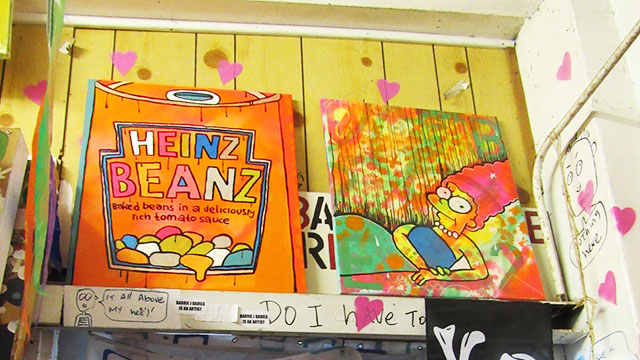
Through all the chaos of splashed paint, sticky glitter, and notorious subjects, when the dust settles, the connection he has with the people looking at his art is the most important bit for him. The internet has been the single-most effective medium that has enabled him to do this. It has been his source material and also a catalyst for his work. He wants to be accessible, which is quite the contrary to the reputation of the art world being all sophisticated and snooty.
He grins sheepishly. “Before, I was like ‘yeah I want to be recognized by the art world’. Now, I just want people to see it and enjoy it. I do it for people. At the end of the day, the art world is fickle. One minute everybody wants to know you and the next minute they don’t.”
Check out more of his artworks that just reek of eye-popping hues and pop culture references:

